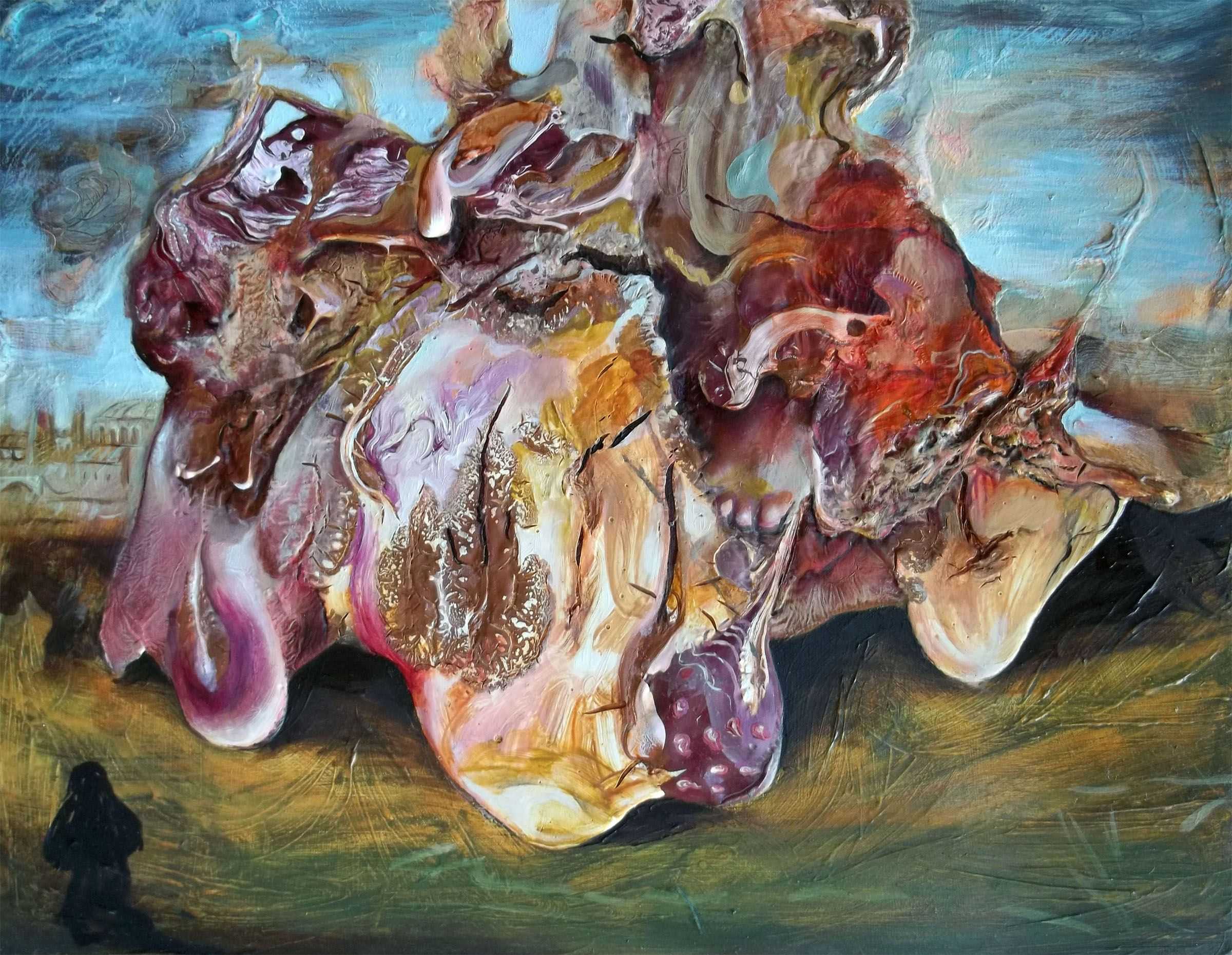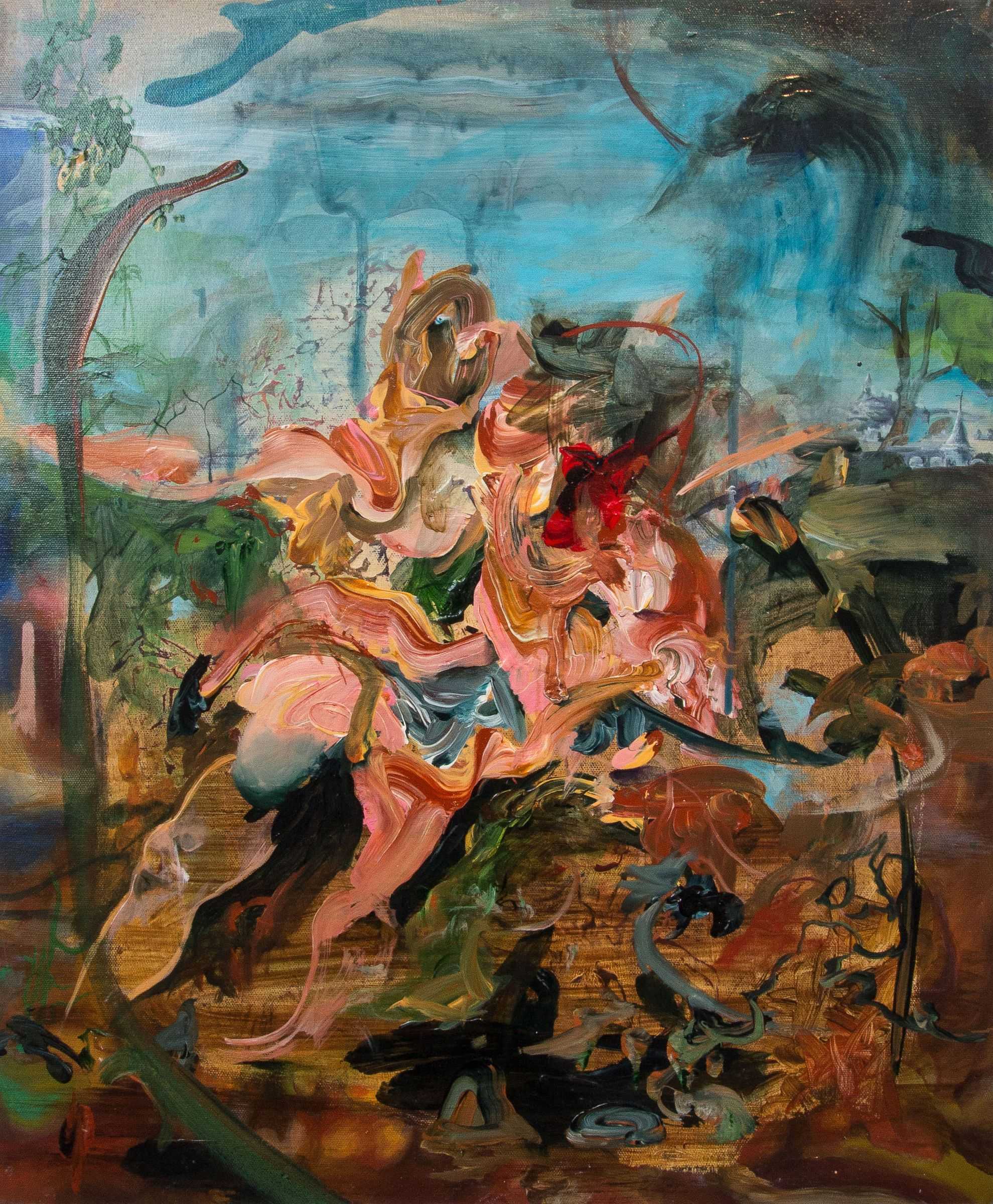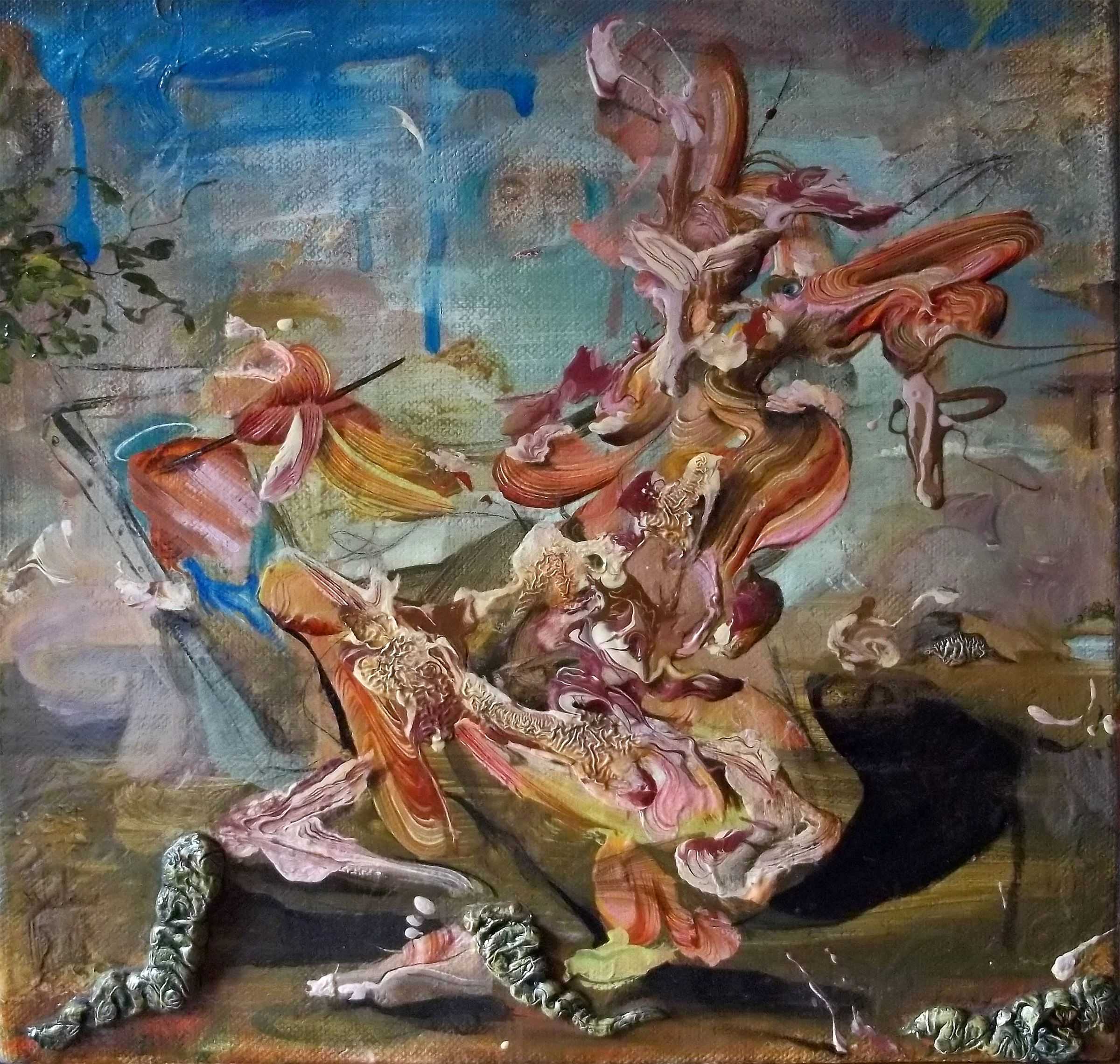Plausible Objects / Difficult Things
Iain Andrews
For me, working as an art psychotherapist with teenagers, much of the working process involves a certain amount of faith in the unconscious and its ability to communicate in ways that bypass spoken language or literal truth. In much the same way, I am interested not in the ways in which painting can depict, say a jug or bowl of fruit, but in the ways in which it may communicate a feeling of oral greed, envy or nostalgia. The use of faery tales, as a kind of frame or structure within which to explore these ideas, helps to keep the work grounded in some way and not allow it to float off into the abstract too much. I once made an actual frame – a melodramatic theatre, Il Teatro Dei Leviatano – that tried to capture this. I am extremely conscious of the performative aspects of making a work, and rather than shy away from that, that performance aspect is something I ham up and enjoy, rather like a pantomime. The idea of creating a space within which to improvise and play is particularly important to me.
I often celebrate the objectness of brush marks – painting shadows beneath them and highlighting them. I’m aware that other artists have employed similar devices at times, and the challenge is always how to make use of this without it becoming too much a trick or habit that one overly relies upon.
I often start from a pre-exisiting image, a springboard from which to launch, and here I think of Winnicott’s quote: ‘there can be no originality except on the basis of tradition.’ Certainly, for me, having something to play with, tear up, put back together, deviate from, is important. Curiously enough, I have sometimes used one of my own images The Eat Me was based on The Giant Sigismund which was itself based on a study by Titian.
Your mention of Simon Ling and John Greenwood in relation to artists who work from models, is a relevant one. The construction of a physical model of some sort from which to paint enables me to play around with ideas and experiment in a similar way to making a sketch. I think that constructing a model of the world, and using this model to work from, is something that each of us does internally too, whether consciously or not. I think about this a lot in art therapy, particularly when, for example, working with a young person with an eating disorder, where their internal working model can have the most severe of consequences if left unchallenged
I don’t know to what extent the origins of the forms prove difficult for the viewer. If painting does its job, then I think the trauma of the source material becomes transformed or adjusted in some way through the process of making a work. The narrative gets attached to an existing image from art history, an image that is then cut up and pasted back together multiple times (I think of Blake’s quote here, ‘each man destroys the thing he loves’) during which it becomes aligned with a particular faery tale or story, which might suggest forms or colours that feed back into the painting.
I am conscious of the fact, (perhaps overly conscious at times) that I am an artist with a practising faith and this awareness can sometimes intensify the feeling of art history weighing heavily upon my shoulders. Depictions of religious events and subjects that proliferated in Western art history, aren’t just interesting themes for me to tackle, but are subjects that I actually believe in and that affect the way I live. The idea of a Creator taking a sticky substance such as clay or dust and transforming it and bringing forth life, is something that I used to view as a mystical, transcendental process. A clear separation between the physical and the spiritual. Over time, I think that separation has been revised through an understanding of the messiness and physicality of the incarnation and also my own participation in sloppy, physical events, the birth of my children for example, that straddle both the spiritual and physical. The gloopiness of paint now doesn’t seem to be something that needs to be avoided in favour of transcendental, misty films of colour, but can hold within it something of that physical mess that teeters on the brink of becoming, without having fully become.
© Iain Andrews and Frances Woodley
Image 1. Iain Andrews, The Glottkin, 2017, oil and acrylic on wood, 40×30 cm. Photo the artist. © the artist.
Image 2. Iain Andrews, The Eat Me, 2010, acrylic on canvas, 50×60 cm. Photo the artist. © the artist.
Image 3. Iain Andrews, The Despesition, 2017, acrylic and oil on linen, 40×40 cm. Photo the artist. © the artist.





